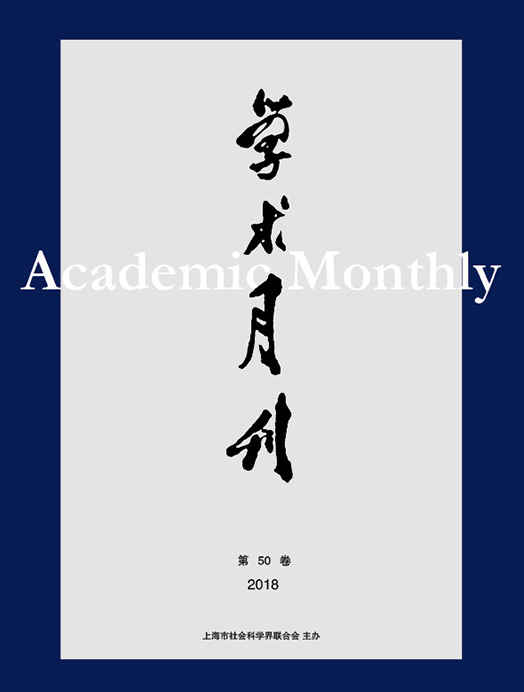Citation:
Jiechang XIA, Yu XIAO and Shilin LI. Re-measurement and Influence Factors of Total Factor Productivity in China’s Service Industry[J]. Academic Monthly, 2019, 51(2): 34-43.

Re-measurement and Influence Factors of Total Factor Productivity in China’s Service Industry
-
1.
National Academy of Economic Strategy, Chinese Academy of Social Sciences, Beijing, 100028
-
2.
Graduate School of Chinese Academy of Social Sciences, Beijing, 102488
-
3.
Institute for Global Private Equity, Tsinghua University
-
Abstract
This paper uses the semi-parametric OP method (Olley and Pakes, 1996) to measure the total factor productivity of the service industry in China from 2007 to 2016. The study found that in the sub-sectors of the service industry, the degree of technological progress of seven industries, including real estate and finance, is higher than that of public management and social organizations, as well as health, social security and social welfare industries intuitively. In the sub-regions, the degree of technological progress of Beijing, Shanghai, Zhejiang, Guangdong and other places is significantly higher than that of the central and western provinces and cities. From the perspective of growth trends, there are different increases and decreases between different industries within the service industry. However, since 2007, the total factor productivity of China’s service industry has shown a significant increase. Although some industries have shortcomings in technological progress, these gaps are shrinking significantly in terms of development trends.Among the four major economic regions, in addition to the downward trend in the western region, the total factor productivity of the service industry in the eastern, central and northeastern regions of China has increased significantly. From the perspective of influencing factors, the level of service industry development, urbanization rate, trade dependence and birth rate are all important variables to promote the growth of total factor productivity in the service industry.
-

-
References
-
Access
-
-
[1]
LIU Zhibiao
. . Academic Monthly,
2018, 50(7): 39-45.
-
[2]
Dazhong CHENG
, Li YU
, Ning WANG
. Opening-up and Liberalization of Services:Basic Trend, International Comparison and China’s Strategy. Academic Monthly,
2019, 51(11): 40-59.
-
[3]
Miaojie YU
, Xiaotong WANG
. China-ASEAN Free Trade Agreement and Chinese Enterprise Productivity. Academic Monthly,
2021, 53(3): 50-62.
-
[4]
Guoqiang TIAN
, Xudong CHEN
. How to Pursue Progress while Maintaining Stability and Promote High-quality Development for China’s Economy. Academic Monthly,
2022, 54(6): 34-46.
-
[5]
Baoping REN
. New Logic of Promoting High-quality Development in the New Journey of Chinese Path to Modernization. Academic Monthly,
2023, 55(1): 48-55.
-
[6]
Baoping REN
. The Major Theoretical Problems in the Period of the 14th Five-Year Plan to Accelerate the Development of High Qualitye. Academic Monthly,
2021, 53(2): 75-84.
-
[7]
Guoqiang TIAN
. Policy Coordination and Reform Response for China’s High-quality Economic Development. Academic Monthly,
2019, 51(5): 32-38.
-
[8]
Hutao YANG
. High Quality Economic Activities: Mechanism, Specificity and Policy Choice. Academic Monthly,
2020, 52(4): 35-44.
-
[9]
Wei LIU
. Chinese Modernization and Low-carbon Green Development. Academic Monthly,
2023, 55(1): 39-47.
-
[10]
,
. . Academic Monthly,
2023, 55(1): 208-216.
-
[11]
TIAN Guoqiang
. Comparison of Moral Philosophies between Smith and Kant. Academic Monthly,
2023, 55(5): 36-44.
-
[12]
Mingsheng PENG
, Conglai FAN
. The Direction of Deepening Reform Based on the Practice of China’s Financial Reform. Academic Monthly,
2020, 52(5): 51-61, 50.
-
[13]
Tie LYU
, Zaichi LI
. Digital Technology Empowers High-quality Development of Manufacturin. Academic Monthly,
2021, 53(4): 56-65, 80.
-
[14]
YUAN Xiaoyan
. City Size,Service Development and Female Migrants Employment. Academic Monthly,
2023, 55(9): 58-67.
-
[15]
Yuchang HE
, Chao PAN
. High Quality of Economic Development Lying in High Quality of the Real Economy. Academic Monthly,
2019, 51(9): 57-69.
-
[16]
. Theoretical Interpretation and Practical Orientation of China’s Economy from High Speed Growth to High Quality Development in New EraRen Baoping. Academic Monthly,
2018, 50(03): 66-74.
-
[17]
Yanjing ZHAO
, Shuang QIU
, Tao SONG
. The Transition from High-speed to the High-quality of China’s Urbanization. Academic Monthly,
2019, 51(6): 32-44.
-
[18]
Wei WANG
, Yufei LIU
, Yan XU
. Working-age Population Structure and Dynamic Evolution of China’s Labor Productivity. Academic Monthly,
2019, 51(8): 48-64.
-
[19]
Zhiping HU
. Political Economy of the Change of Rural Public Service Supply in China: Development Stage and Government Behavior Framework. Academic Monthly,
2019, 51(6): 53-63.
-
[20]
TIAN Ping
. Macroscopic Resource Allocation Theory and the Empirical Research on China’s Development. Academic Monthly,
2023, 55(12): 52-61.
-
-




 沪公网安备 31010102003103号
沪公网安备 31010102003103号 DownLoad:
DownLoad: